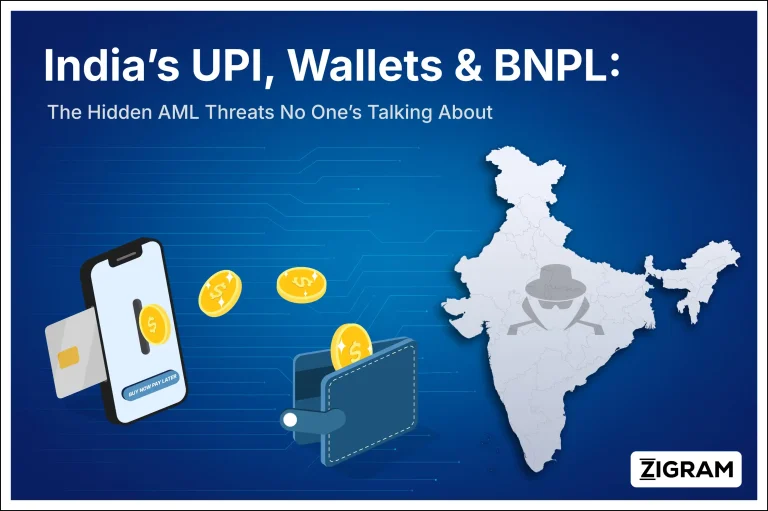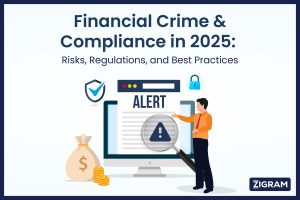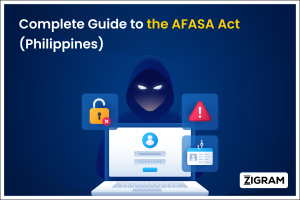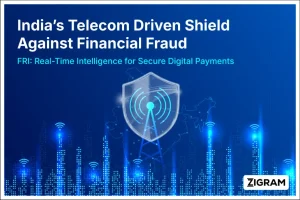Table of Contents
India’s journey into the fintech frontier has been nothing short of revolutionary. The Unified Payments Interface (UPI), launched in April 2016, now dominates India’s payments ecosystem with over 500 million active users as of mid-2025, processing nearly 19.5 billion transactions in July 2025 alone—making India the global leader in real-time payments. Complementing UPI, mobile wallets have also surged in usage, helping India overtake credit cards in annual mobile payment volume by 2021.

This growth is foundational to financial inclusion: over 80% of adults have accounts, yet a credit gap of $300 billion persists. Fintech firms, through digital wallets and BNPL (Buy Now Pay Later) services, are instrumental in bridging that gap, especially for underserved consumers and MSMEs.
An overview of the regulatory landscape reveals multiple stakeholders like RBI, SEBI, NPCI are managing payments, lending, capital markets, and more. The result is a complex compliance environment that’s constantly evolving.
AML Regulations Struggling To Keep Pace With Increasing BNPL Users
Buy Now, Pay Later (BNPL) services have seen both rapid adoption and mounting concerns. At its peak, BNPL usage in India was rising faster than global benchmarks, growing 21% in six months versus global growth of 18% (pre-2022). Its convenience and flexibility made it a favorite among millennials and consumers lacking access to traditional credit, including SMEs and educational and healthcare buyers.
Yet the model’s rapid rise exposed regulatory cracks. Consumers often lacked clarity on terms, hidden fees were rampant, and the RBI identified potential overheating risks. In response, RBI formed a working group for digital lending oversight, and prohibited the use of BNPL for wallet refills—a sign of regulatory caution.
Most crucially, the introduction of RBI’s Digital Lending Guidelines marks a turning point: platforms are now held to rigorous standards of accountability and responsible lending—raising the bar for BNPL models.
Regulatory Oversight & KYC: Strengths and Weaknesses
India’s fintech ecosystem is defined by its regulatory layering. While the RBI leads in payments and digital lending, SEBI, and NPCI also play pivotal roles—making the compliance environment multifaceted.
For AML and KYC, fintechs, NBFCs, SFBs, and payment entities face intensified scrutiny. In 2024, the RBI intensified its enforcement—making AML and KYC non-negotiable. Prominent fintechs faced license risks and business disruptions over non-compliance. One striking enforcement action: Paytm Payments Bank was barred from onboarding new customers or allowing deposits, top-ups, or wallet activity after March 15, 2024, under RBI’s directive for AML non-compliance.
Fraud, Cyber Threats & AML Risks Across Channels
Fintech’s expansion isn’t without dark undercurrents. Fraudsters are exploiting digital payments, especially UPI and mobile wallets, through phishing, SIM-swap attacks, spoofing, and more. Gateway House reports rising vulnerabilities across banks, PSPs, and wallets—including encryption lapses, insider threats, and inadequate 2FA.
INDIA’s digital fraud losses reached ₹276 crore in 2022–23 (preliminary), and surged further to ₹1,457 crore in 2023–24—highlighting deepening scam exposure.
These threats are exacerbated in BNPL: open-format loan mechanics, lighter credit checks, and opaque terms entice misuse and debt traps—increasing AML and fraud risks.
Academic studies reinforce these threats. Cyber attacks—especially phishing and malware—remain dominant in digital banking, with AI-driven fraud detection, MFA, and blockchain being critical defenses. But rapid fintech growth plus integration with third-party platforms introduce fresh attack surfaces, requiring regulatory vigilance.
Leveraging Technology: RegTech, AI, Biometrics & Blockchain
To keep pace with evolving threats, India’s fintech sector has embraced technological countermeasures:
- AI-powered anomaly detection for real-time fraud monitoring
- Biometric authentication (facial recognition, fingerprints) and behavioral analytics for secure access
- Blockchain and tokenization for transaction traceability and fraud prevention
AML Complexity in the Fintech Landscape
To summarize the multifaceted AML challenge across wallets and BNPL:
Regulatory Ambiguity for BNPL
Unclear classification—whether as NBFC, lender, or e-commerce facilitator—has left BNPL in regulatory limbo. The Digital Lending Guidelines aim to clarify, but transitional uncertainties remain.
Frail KYC Implementation in High-Velocity Onboarding
Rapid digital onboarding—with minimal friction—has produced identity spoofing, account duplication, and gaps in customer diligence. RBI’s crackdown on onboarding reflects this risk.
Enhanced Fraud Exposure
Escalating UPI and wallet scams, coupled with BNPL’s opaque structures, leave consumers exposed—and AML blind spots exposed beneath.
Tech-Readiness & Privacy Tensions
While RegTech tools are approaching maturity, high cost and privacy compliance (e.g. DPDP, data localization) create friction in implementation.
Data Overload & Document Burden
Fintech lenders often struggle with massive documentation and data extraction—making manual KYC/AML work slow and error-prone.
Strategic Roadmap: Strengthening AML Resilience
To mitigate the AML and fraud challenges underpinning India’s fintech boom, stakeholders should consider:
Clarify Regulatory Positioning of BNPL
RBI’s guidelines should delineate BNPL’s risk profile, required licensing norms, and capital/AML thresholds.
Enforce Tiered Risk-Based KYC
Rapid onboarding should be augmented with AI-powered verification, device intelligence, and biometric safeguards—especially for high-volume low-touch transactions.
Deploy Smart AML Surveillance
Real-time ML surveillance can flag and block suspicious patterns; augment automated Suspicious Transaction Reports (STRs).
Embed Privacy by Design
AML should respect DPDP and global privacy frameworks—encrypting credentials, minimizing data retention, and ensuring consumer consent.
Scale RegTech Among Smaller Fintechs
Encourage access to affordable AML/KYC toolkits, open-source models, and sandbox environments to uplift smaller players.
Combat Human Layer Risks
personnel to detect social engineering and phishing tactics.
Strengthen Enforcement Ecosystem
Boost FIU resources and PMLA judicial capacity to expedite AML cases, strengthen convictions, and reinforce deterrence.
Balancing AML Regulations and Innovations With Integrity
India’s fintech ascent—from wallets to BNPL—offers unprecedented access and convenience. But embedded within is a paradox: innovation that outpaces regulatory calibration invites vulnerabilities. Without prioritized AML foresight, consumer trust and systemic security erode.
Investing in regulatory clarity, tech-savvy KYC/AML systems, privacy-respecting infrastructures, workforce literacy, and enforcement networks can bridge the trust gap—ensuring that India’s fintech future is inclusive and resilient.
Sources
India’s UPI surge and payments milestones (Wikipedia)
Fintech regulatory landscape and investment trends (Chambers, ICLG Business Reports)
BNPL growth, risks, and regulatory response (The Economic Times, IJNRD, FinTech Futures, Tclf, AM Legals)
RBI’s Digital Lending Guidelines and fintech compliance dynamics (AM Legals, zigram.tech, Wikipedia)
Fraud, cyber threats, and AML challenges in digital payments (IFSA Network, Wikipedia, arXiv)
Mobile payments overtaking credit cards; fintech inclusion (Wikipedia)
Operational/document challenges in fintech lending (Precisa.in)
- #GENIUSAct
- #Stablecoins
- #AML
- #FinancialCrime
- #Compliance
- #CryptoRegulation
- #FinCEN
- #SanctionsCompliance
- #RegTech
- #AntiMoneyLaundering
- #DigitalAssets
- #FinancialSecurity







